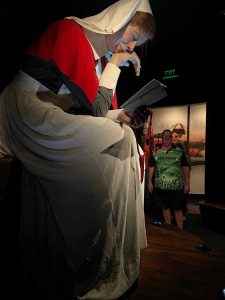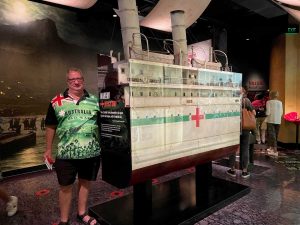Our ANZACs and the Role of the Maheno
As we approach ANZAC Day, one of the major commemorative events for the Tin Can Bay and Rainbow Beach RSL Sub Branches, it is appropriate that we look backwards and learn more about our ANZACs and their links to our own community.
A couple of weeks ago my wife and I were lucky enough to be in Wellington where we visited the Museum of New Zealand Te Papa Tongarewa.
One of the main exhibitions was Gallipoli: The Scale of our War, an exhibition like no other that tells the story of the Gallipoli through the eyes and words of eight ordinary New Zealanders who were involved in the Gallipoli campaign.
Each is captured frozen in a moment of time on a monumental scale – 2.4 times human size. The exhibition was created under the oversight of Sir Peter Jackson, director of Lord of the Rings movies and a New Zealand legend.
Linked to this magnificent and heart-rending exhibition was the story of the Maheno, the New Zealand Hospital ship that treated wounded soldiers from the trenches of Gallipoli. As described by nurses on board the ship ‘…many a poor man will sink into those beds after weeks in the trenches feeling he has found heaven on earth.’
And yes, this is the same Maheno whose wreckage has lain for decades on the surf beach of K’gari (Fraser Island).
Built in 1905, the SS Maheno was one of the first turbine-driven steamers. She plied a regular route between Sydney and Auckland until she was commissioned as a hospital ship in Europe during World War One.
In 1935, she and her sister ship the Oonah were sold to Japan for scrap. They were being towed to Japan when a cyclone snapped the tow chain and the Maheno drifted helplessly onto K’gari’s ocean beach.
I happened to wear one of my RSL shirts to the exhibition that day and was stopped for a chat by many locals who commented on the ANZAC tradition and what it means to both our countries. Exhibitions like this one bring to life the pain and hardships suffered by our armed forces during Gallipoli and other historical conflicts.
All we can say to all our armed forces is ‘Thank you for your Service’.
Ross Carruthers
Tin Can Bay RSL








